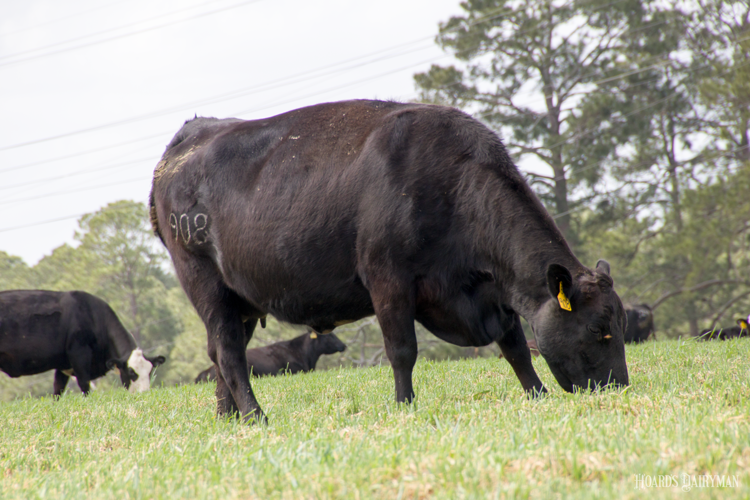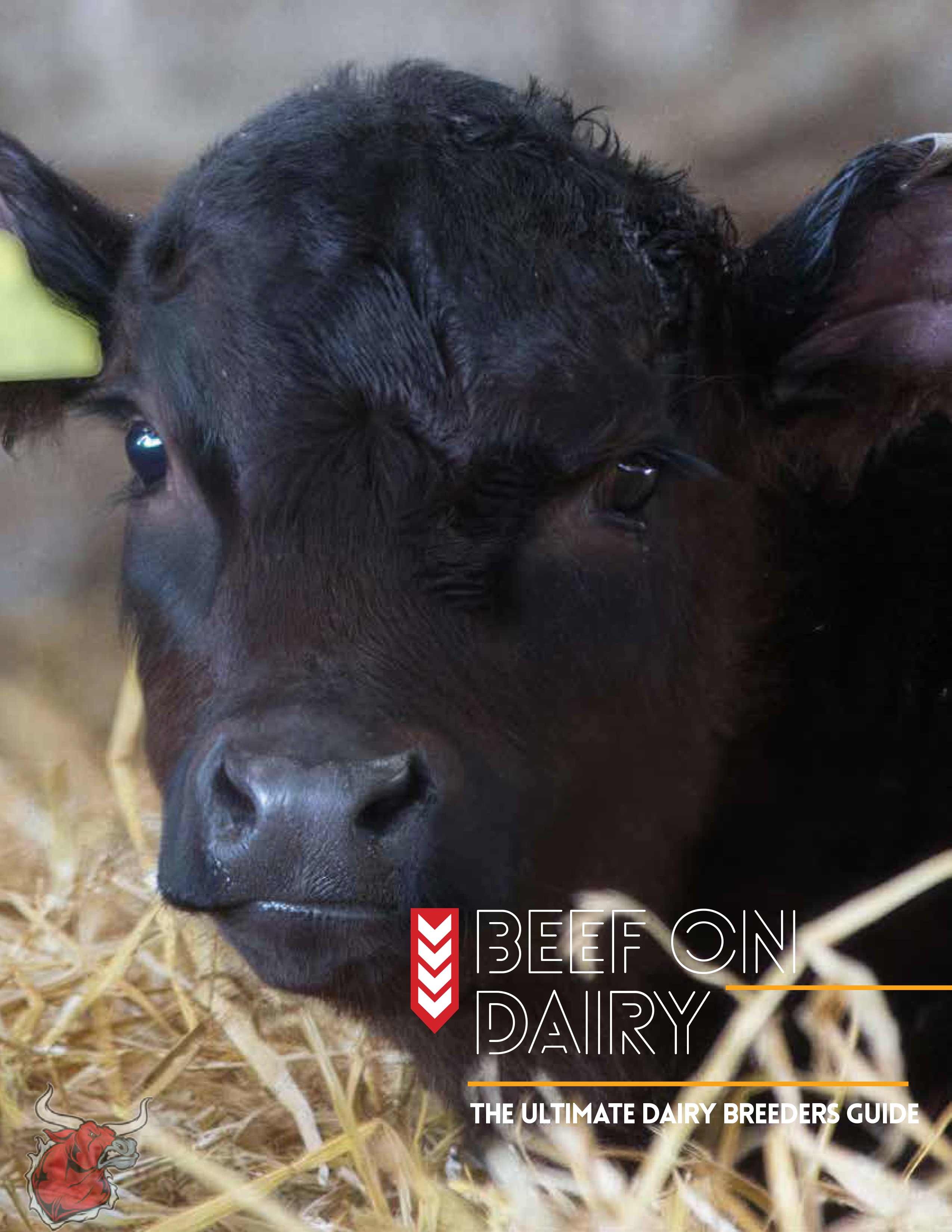Learn how grazing strategies can improve weight and efficiency in dair y-beef crossbred cattle. Can these techniques help you enhance your herd’s performance? Read to find out.

Picture combining beef cattle’s strong efficiency with dairy cows’ milk-producing ability. Welcome to the universe of crossbred dairy-beef animals. These hybrids are a calculated junction of dairy and beef production. For dairy producers, they provide a convincing approach to increase value. Their different requirements, meanwhile, greatly vary from those of local beef cattle. Realizing the unique requirements of dairy-beef crossbreds depends on knowing them. Explore our study results, valuable recommendations, and expert opinions to guide you toward wise choices. Ready to learn how grazing affects the profitability and development of your dairy-beef crossbreds? Please discover out by reading on.
Discover the Unique Challenges and Opportunities of Dairy-Beef Crossbreds By combining the genetic traits of dairy and beef breeds, dairy-beef crossbred animals present unique demands. Selected for their milk production, dairy breeds such as Holsteins produce animals with a different muscle distribution and body type compared to beef varieties like Angus. This necessitates specific monitoring and dietary treatment, making them a fascinating subject of study.
Usually grown on dairy farms in controlled conditions, these calves require assistance adjusting to group life and outdoor grazing when transferred to a feedlot or pasture. Making sure these crossbreds realize their potential means matching them with meat systems. Dairy and cattle farmers will gain from tailored feeding regimens and slow changes to new surroundings.
Unlocking Postweaned Potential: Insights from Ally Grote’s Dairy-Beef Research
Important new information on the unique requirements of post-weaned dairy-beef animals was presented during an engaging Oklahoma State University Extension beef-on-dairy webinar. Graduate student Ally Grote presented her essential study, filling a need mostly related to younger calves. Her research provides new ideas and practical techniques to improve their performance in cattle production systems.
Striking a Balance: Grazing Versus Immediate Feedlot EntryThe first study tracked dairy-beef steers grazing five to six months before going into a feedlot vs those arriving right after. Since these calves frequently come smaller than local beef cattle, grazing before the feedlot saves feed and labor. This intermediate grazing season lowers feedlot resource requirements.
Grading, however, takes time. Eighty days older at the feedlot entrance, the cattle grazed were Still; they spent 144 fewer days in the feedlot and weighed 70 pounds more at slaughter. Their average daily growth (ADG) was 4.2 pounds, but for the straight-to-feedlot group, it was 3.4.
Therefore, even if grazing increases the beginning timeline, it generates more considerable, more robust animals and lowers the intense feedlot care time, optimizing labor and expenses.
Grote’s initial experiment provided apparent answers. Although the animals were 80 days older at slaughter, grazing before feedlot arrival shortened feedlot duration by 144 days. Amazingly, upon shipment, grazed animals weighed seventy pounds more.
The grazed group outperformed, with an average daily growth (ADG) of 4.2 pounds instead of 3.4 pounds for pure feedlot animals. Compared to the feedlot group’s 3.4 pounds, grass animals gained 4.1 pounds daily overall.
Post-slaughter grazed animals had a somewhat greater rib-eye area (14.2 square inches vs. 13.9 inches) and a hotter carcass weight (896 pounds vs. 865 pounds). For dairy beef, meat grading revealed greater consistency in the Choice category; straight feedlot steers more commonly fell into the Select and Prime categories.
Setting the Stage for Grazing Success: preparing Dairy-Beef Crossbreds for the Journey AheadMoving pasture might challenge dairy-beef cows. Their lack of familiarity with pastures, outside circumstances, or group living may cause stress and delayed development.
Acclimatization is a vital phase. They gradually get comfortable being exposed to water troughs and fences. Furthermore, it is essential to select the appropriate forages for their habitat and dietary requirements. This guarantees their health and development, as well as the required nutrients.
Emphasizing these phases will enable them to flourish in fresh grazing grounds. Maximizing their potential in cattle production systems depends on an awareness of and solution for these obstacles.
Compensatory Gain: Debunking Myths with Dairy-Beef Performance
The second research looked at the compensatory weight growth of dairy-beef animals on a pasture. Researchers watched as 75 native beef and 75 dairy-beef animals moved from grass to a growth supplement in the feedlot.
The results were astonishing. Dairy-beef cattle began lighter, but they caught up fast. Dairy-beef animals grew about 5 pounds daily for 87 days, compared to 4 pounds for native beef, thereby attaining a 115% compensatory gain—much more than the 60% to 80% predicted for local meat.
Dairy-beef cattle, beginning smaller, quickly closed the weight difference. Their near 5-pound daily increase exceeded the usual native beef compensatory gain range. Furthermore, the groups showed no appreciable variations in health, therefore highlighting the vital condition of dairy-beef calves.
The Bottom Line
According to studies by Ally Grote, dairy-beef crossbreds may integrate well into beef production systems and meet competitive performance criteria. Better weight increase and consistent meat quality follow from reduced labor and cost savings gained by grazing before feedlot entrance. The second research shows that dairy beef animals may almost equal or exceed native beef cattle in growth, disproving the notion that they cannot acquire compensatory weight. Dairy-beef animals may be lucrative and flourish under the correct conditions for beef farmers.
Key Takeaways:
- Dairy-beef animals can graze before feedlot finishing, saving on feed costs and labor.
- Grazed dairy-beef animals spend less time on feed in the feedlot and achieve higher average daily gains compared to those that go straight to the feedlot.
- At slaughter, grazed animals had higher hot carcass weights and larger rib-eye areas.
- Dairy-beef meat is more consistent and often grades in the middle Choice category, with fewer extremes in the grading spectrum.
- Acclimating dairy-beef animals to pasture and selecting appropriate forages is crucial for successful grazing.
- Contrary to belief, dairy-beef animals can achieve significant compensatory gain after being on pasture, often exceeding the performance of native beef.
- No differences in morbidity or mortality rates were observed between dairy-beef and native beef animals in the feedlot.
Summary:
Dairy-beef crossbreds, combining genetic traits of dairy and beef breeds, present unique challenges and opportunities for dairy producers. Graduate student Ally Grote’s research suggests grazing before feedlot entry can save feed and labor, and prepare cows for the journey ahead. Dairy-beef cattle can achieve a compensatory gain of 115%, outperforming native beef cattle in growth. This research suggests that dairy-beef crossbreds may be lucrative and flourish under the right conditions for beef farmers.
 Download “The Ultimate Dairy Breeders Guide to Beef on Dairy Integration” Now!
Download “The Ultimate Dairy Breeders Guide to Beef on Dairy Integration” Now!
Are you eager to discover the benefits of integrating beef genetics into your dairy herd? “The Ultimate Dairy Breeders Guide to Beef on Dairy Integration” is your key to enhancing productivity and profitability. This guide is explicitly designed for progressive dairy breeders, from choosing the best beef breeds for dairy integration to advanced genetic selection tips. Get practical management practices to elevate your breeding program. Understand the use of proven beef sires, from selection to offspring performance. Gain actionable insights through expert advice and real-world case studies. Learn about marketing, financial planning, and market assessment to maximize profitability. Dive into the world of beef-on-dairy integration. Leverage the latest genetic tools and technologies to enhance your livestock quality. By the end of this guide, you’ll make informed decisions, boost farm efficiency, and effectively diversify your business. Embark on this journey with us and unlock the full potential of your dairy herd with beef-on-dairy integration. Get Started!
Learn more:
- Adjusting Strategies for Alternative Forages in Dairy Farming: Optimizing Crop Nutrition
- Transforming Young Heifers to Mature Cows: Boosting Dairy Herd Longevity
- Boosting Dairy Farm Profits: 7 Effective Strategies to Enhance Cash Flow












